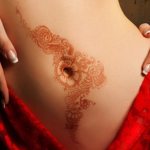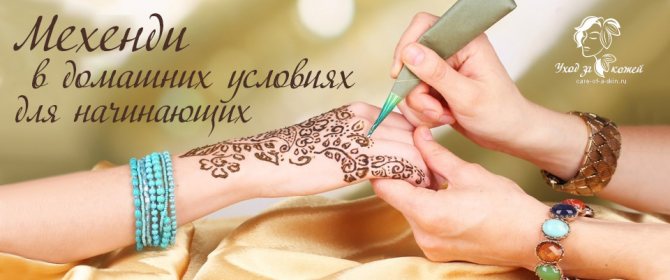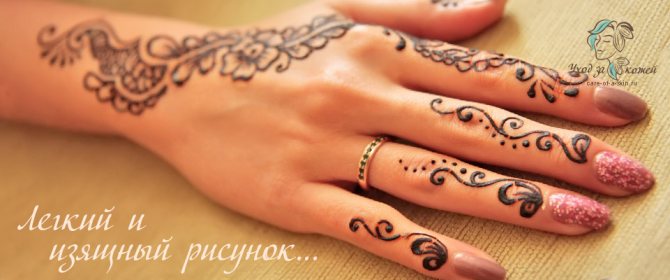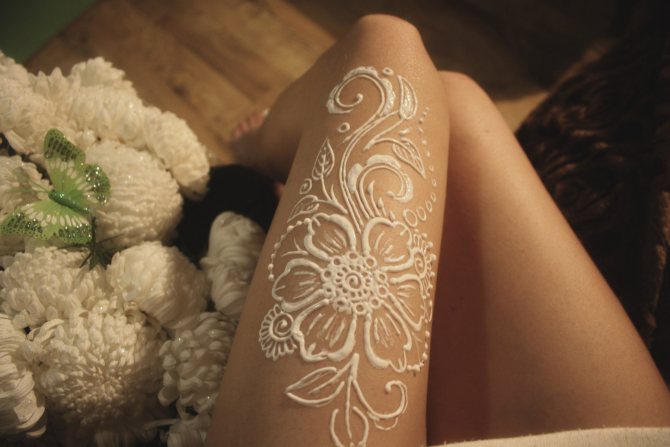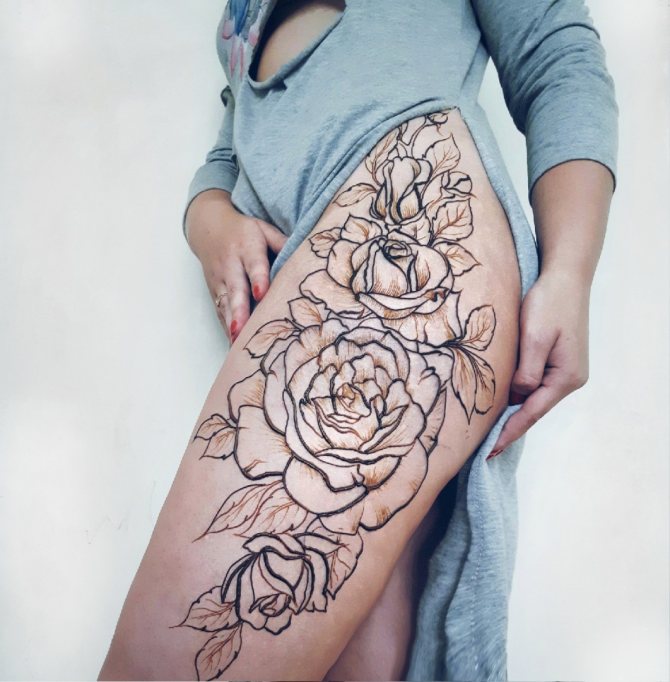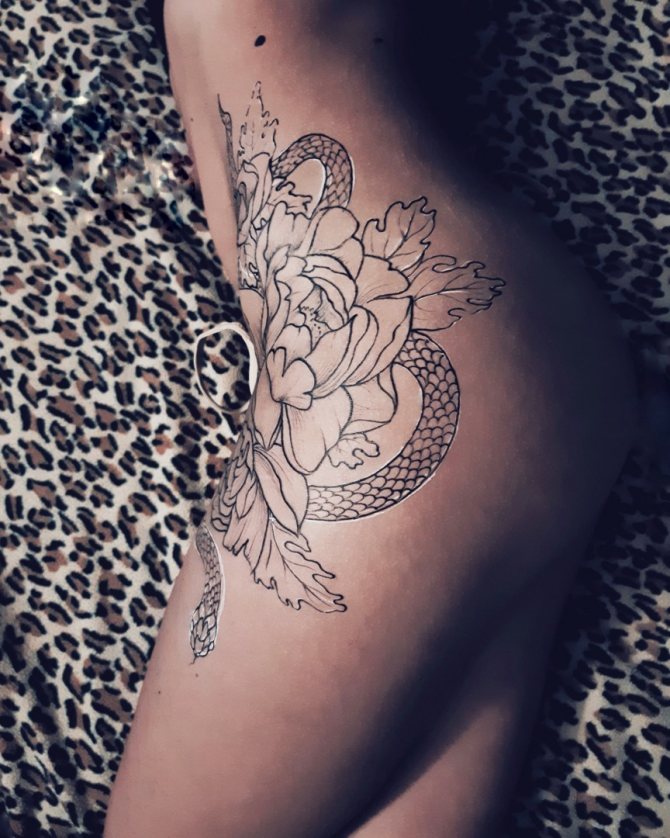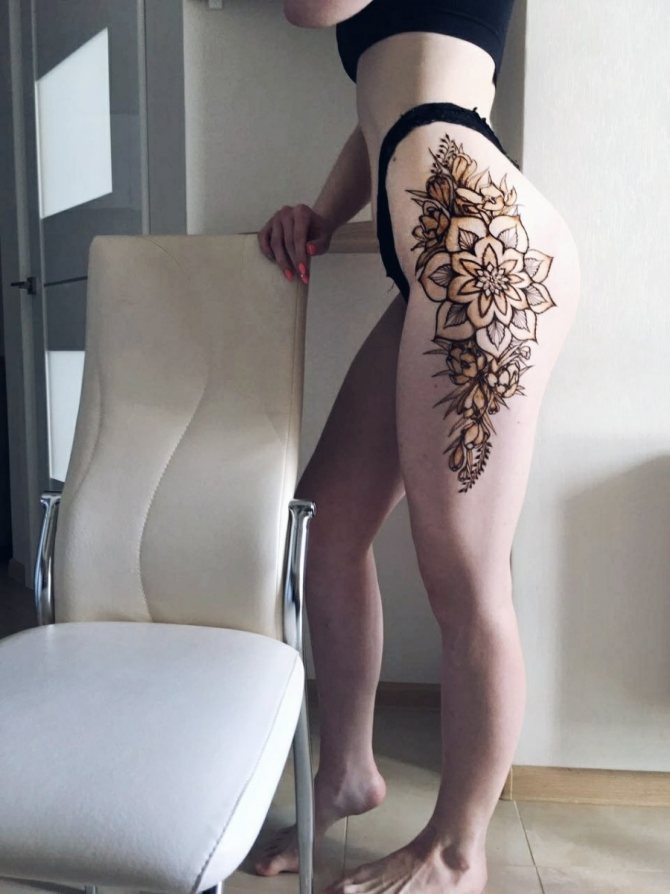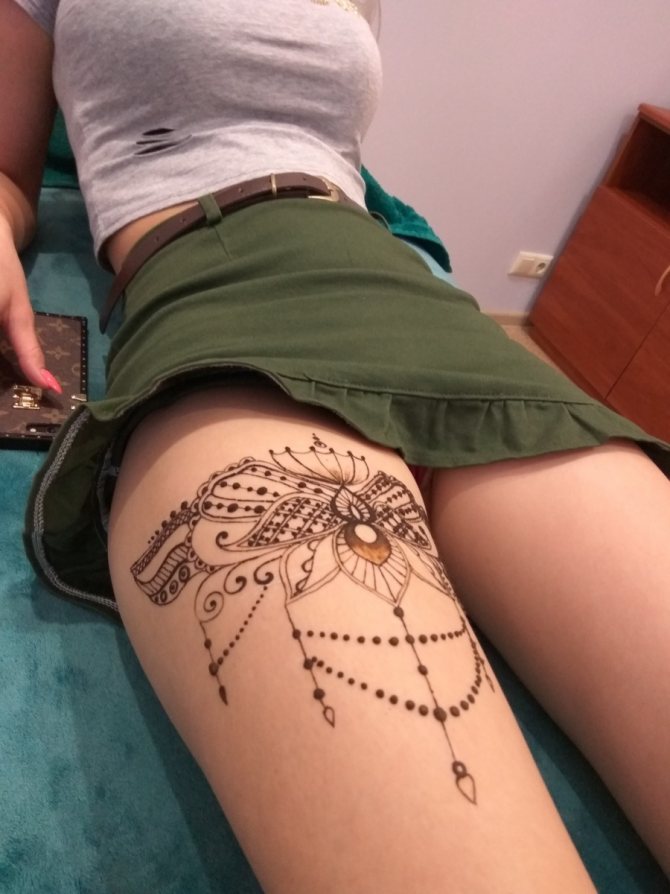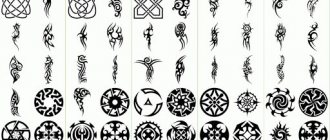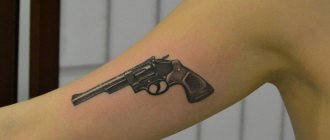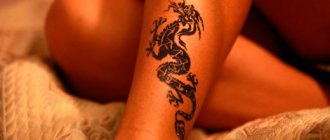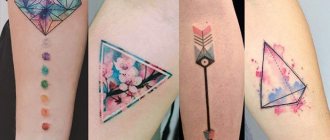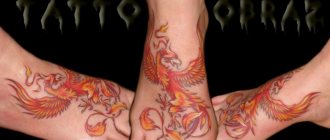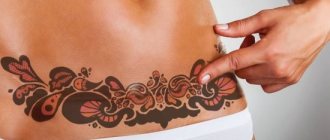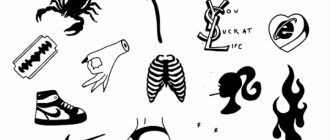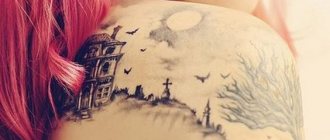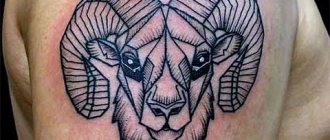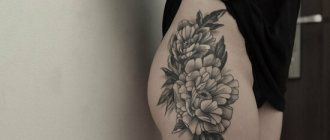- Main
- Mehendi
These days temporary tattoos have become a stylish accessory and are considered a fashionable hobby among young people. The drawings are made for beauty and are rarely semantic. The tradition of body painting came to Europe from the East, where each pattern has its own sacred meaning and is believed to have an impact on human destiny.
General Information
Body henna painting is the most beautiful kind of art that originated in Ancient Egypt. In all countries, painting the body with henna took place for different reasons. For example, during excavations in Egypt mummies with painted hair and nails were found. In those early days, only the daughters of noble families could afford mehendi on the stomach or other parts of the body. In Arab countries, bodies were painted with henna to cool the temperature of the skin. Persian dancers liked to paint their hands before dances and performances.
Centuries later, people in India have never stopped using henna to paint their bodies, because they believe the paintings protect them from evil spirits. No event is complete without mehendi. A special ritual is the painting of the bride's body with red henna. The brighter the drawing, the happier the couple should be in their married life. Pregnant women make mehendi drawings on the abdomen, thus protecting the newborn life.
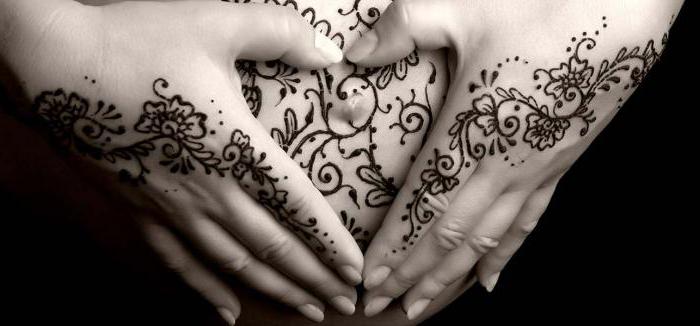
All owners of this painting are prophesied beauty, longevity and wealth. It is from there that the fashion for mehendi spread to all countries. When women return from traveling in India, they arrive with beautiful mehendi images on their stomachs, arms and legs. The henna takes about two weeks to wash off. Therefore, it does not have time to bore its owners.
The henna drawings originate from the Vedic books and represent the awakening of the inner light of the soul. This can also explain the symbolism of the images. Traditionally, the patterns consist of plant ornaments, drawings of birds, sun and circles. Indian women like to draw from the tips of the nails, ending at the wrist or elbow. The patterns are made both on the outside of the palm and on the inside. The upper part of a finger phalanx is usually painted completely, and further the flight of imagination is not limited.
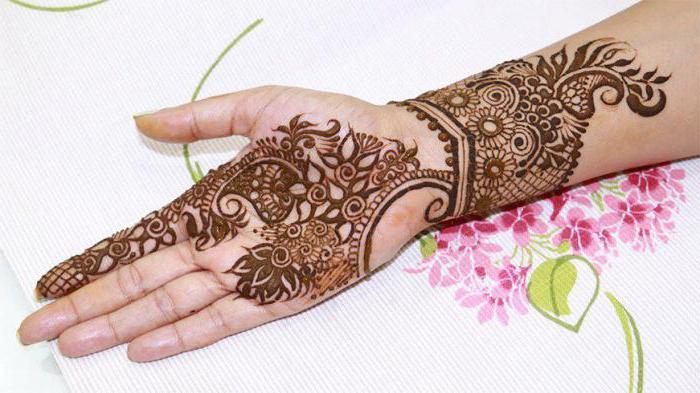

Tools for Mehendi
After making up your mind to get acquainted with this art, you should get ready for creativity, as well as buy some materials. For henna painting at home you will need:
- Henna. It is not necessary to buy natural henna, mix it yourself and struggle with finding a dispenser. For beginners, special tubes of henna are sold, which will help to evenly apply the mehendi drawing on the stomach, arms and legs, and also without problems will be stored until the next use.
- Cones. Needed for outlining the clear edges of the drawing. Such a cone can be made yourself, armed with cardboard paper and scissors. The necessary size of the paper can simply be folded into a funnel and fastened with tape.
- Stencils. With their help, you can draw beautiful mehendi. On the stomach and hands, it will be especially convenient to draw with the help of a stencil. The main thing is to turn it the right way and evenly fill the holes that form.
After preparing all the materials, you can watch educational videos on the Internet.
Tattoo henna at home
In case you have not found a master on the application of such tattoos, you can do it yourself. Of course, it will take some practice to make the drawings even and of the same thickness. It is also necessary to buy some materials for work.
It is best to buy a ready-made composition for drawing. It can be in a tube or in a special cone. The latter option is the most convenient, because the henna from the cone acts evenly. For beginners, this is an ideal option that will help you quickly learn how to make beautiful patterns.
If you have trouble finding a ready-made mixture, you can make it yourself. There are several recipes that differ from each other with additional ingredients. This does not affect the quality of henna, so choose any of them.
According to the first recipe, you need to mix about 20 grams of henna and the juice of half a lemon. This mixture should be insisted in a bag for one day. After that, you can add essential oil to make the pattern last longer, as well as ground coffee to make the mixture darker.
The second recipe is that the same amount of henna should be boiled in water for an hour. For brightness of color you can add black tea or coffee. The mixture should be cooled and only then try to apply drawings.
As for the process of application, some masters suggest that beginners use special stencils. Thanks to this, the drawing will definitely have the right shape.
A beautiful henna tattoo is a whole art, thanks to which you can decorate the body and emphasize its merits. In addition, the process of drawing is absolutely painless, which is a significant advantage.
Have you tried doing a henna tattoo?
Mehendi on the Belly for Pregnant Women
Recently, the mehendi style is very popular with pregnant women. The drawings are applied both in standard red-brown color and in white. In order to decide on the style, you can search the Internet for appropriate photos. Mehendi on the abdomen is best done in the first and last months of pregnancy. Indian women believe that the mother and the baby in this period need protection from evil spirits and help from good ones most of all. In addition, the beautiful aesthetic appearance of the painted belly provides an opportunity to make a bright and memorable photo shoot.
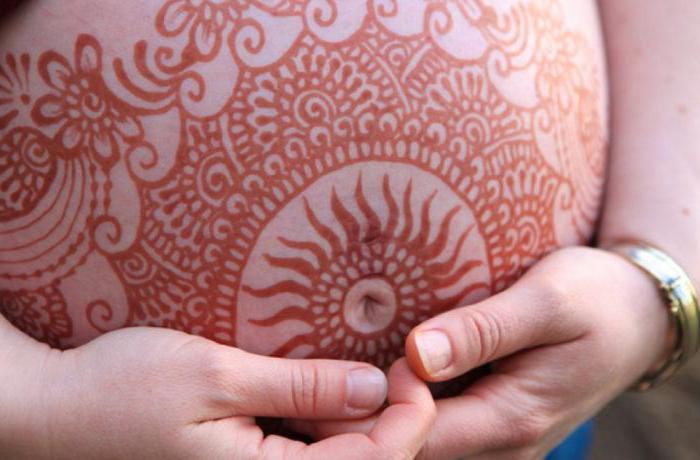

There are four styles of mehendi
- Arabian. Embodying floral motifs that resemble Arabic painting and embroidery.
- African (Moroccan, Berber). Contains elements of geometrical figures with floral motifs.
- Indian. Patterns are mainly composed of ornaments, lines and dotted patterns. Pakistani and Indian designs are applied not only on the feet and palms, but also go upwards.
- Asian. This style incorporates elements of Middle Eastern and Indian patterns.
How to care for mehendi?
For a henna tattoo to last a long time, it needs special care.
The basic rules:
- During the first three days, protect the place of drawing from aggressive substances.
- Wear gloves on your hands when doing household chores.
- Reduce sweating at the drawing area. The henna will quickly fade and be washed away by sweat, so you should refrain from going to the gym and sauna.
- Salt and chlorine will adversely affect the appearance of mehendi, so the pool will also have to give up for a while.
- In case of fading mehendi tattoo on the stomach, arms or legs you can restore the drawing on the contours, but not more than two times, because the skin needs to rest.
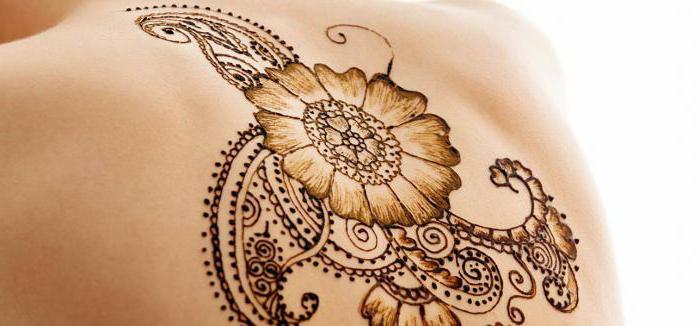

Performing mehendi on your body, you can not be afraid to experiment with the color and shape of the drawing. More than 2 weeks of the image still can not last, and a pleasant impression of the changes in appearance will remain in the memories for a long time.
Where to place the henna pattern
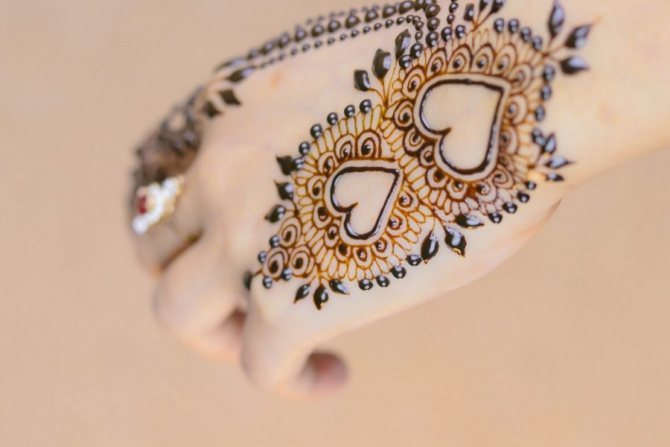

Usually the pattern is made where there is the least friction on the clothes. This is due to the fact that the constant friction reduces the wear life of the drawing and quickly deprives it of brightness.
Common locations for mehendi:
- hands and palms. Often the henna pattern is placed simultaneously on the outer and inner side of the palm. But drawings on the palms are not recommended for people with high sweating - because of the constant moisture henna is quickly erased;
- Forearm. In the summer the forearm zone - from wrist to elbow - is the least exposed, because the clothes are short - T-shirts and T-shirts;
- Thigh. The side of the thigh serves as a canvas for eye-catching, feminine patterns, most often floral or featuring animals;
- collarbone. Mehendi on the collarbone looks great on slender girls. Patterns can be small, the size of a matchbox, or cover a large area;
- back and stomach. On the back and abdomen pattern is usually applied before vacation, when most of the time to be spent in open swimsuits;
- shins and feet. There are abstract patterns of lines and dots, which give the foot elegance.
In an article about the origin and the rules of performing henna tattoos, I have already said that, according to the inhabitants of the East, each pattern and its elements carry a hidden meaning. I want to tell you about common patterns and their meanings - if it comes in handy.
- an elongated drop. It is recommended to apply the drop to women who want to marry well, because it symbolizes wealth and fertility;
- om. A mysterious and mysterious symbol often found in the writings of ancient India. Reflects the two characteristics of the universe - the beginning and infinity. Suitable for people who wish to learn the truth and find spiritual balance;

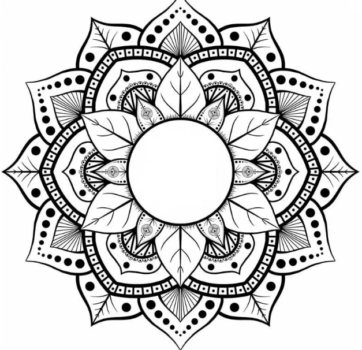
- lotus. Symbol of purity and innocence. Suitable for young girls as well as women who are preparing for motherhood;
- Sun . symbolizes strength, so it is applied to those who feel the moral and physical exhaustion;

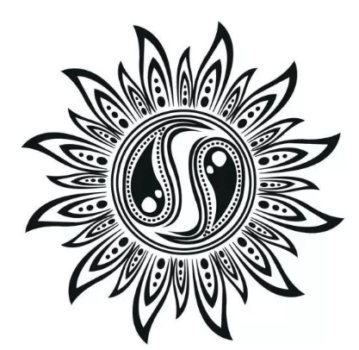
- drawing rich in dots symbolizes love, passion, and desire. A universal drawing element for men and women of all ages.
What is mehendi, how and what to do
